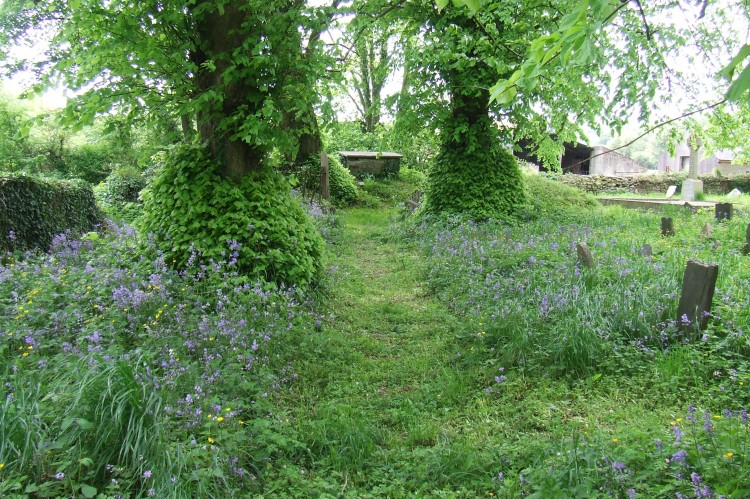Jul
22
2011
By Finn
2 min to read
 Camin O’Brien in his Guidelines for the Care, Conservation and Recording of Historic Graveyards emphasises the need for an annual maintenance regime and he recommends that the motto to adopt when it comes to graveyard maintenance is a ‘little bit every year’.
Camin O’Brien in his Guidelines for the Care, Conservation and Recording of Historic Graveyards emphasises the need for an annual maintenance regime and he recommends that the motto to adopt when it comes to graveyard maintenance is a ‘little bit every year’.
Many local community groups undertake sterling work maintaining their local graveyards and without local communities these sites would completely revert to nature and become overgrown. The Historic Graves workshops consistently emphasise the need for a plan when undertaking a survey within a graveyard. This need for planning is also important when it comes to maintenance. It is recommended that a management plan should be drawn up by the local community prior to any maintenance work in order that works are undertaken in an orderly manner and that the character of a graveyard is retained.
The character of a graveyard results from a mixture of both the built heritage and natural heritage which when combined makes up its character. This ‘charachter’ is unique to every graveyard. Any work undertaken within a graveyard should not destroy or have a negative impact on this but should enhance the character and setting of the graveyard.
The conservation principles most suitable for a historic graveyard are outlined in a document known as the The Burra Charter: The Australia International Council on Monuments and Sites (ICOMOS) Charter for Places of Cultural Significance 1999. The Charter outlines the principles behind conserving and maintaining a place of cultural significance without inadvertently destroying its cultural significance.
These principles formulate the thinking behind the best practice for the care and conservation of historic graveyards. A list of works which should and should not be carried out at historic graveyards was formulated by the National Monuments service in its booklet on the Care and Conservation of Graveyards. The National Monuments Act 1930-2004 is the primary legislation that provides legal protection to recorded monuments that are listed in the Record of Monuments and Places.
A management plan does not have to be a complicated document and in many ways it merely formalises what most community groups do as a matter of course when planning a maintenance programme. The plan however allows this process to be carried out systematically which negates the chance of omissions or mistakes. It also allows for continuity of purpose within local groups as members change over time.
Historic Graves have produced a Management Plan Template which seeks to simplify the process of producing a management plan. The first thing to do is to gather and record the following information about the graveyard;
- Site Name
- Townland, Parish, Barony, County
- National Grid Reference
- Ownership
- Record of Monuments and Places Number
- National Inventory of Architectural Registration Number
- Record of Protected Structures Number (Local Authority Website)
- Local Community Group Name.
All of this information is largely available on line.
The next objective is to outline the site location and the parking and access facilities. This should be followed by a brief description of the graveyard under the following headings;
- Boundary and Entrance
- Ironwork
- Memorials
- Wildlife
- Interior
- Pathways
- Masonry Structures.
A brief site history if available can also be added and a description of the historic cartographic or mapping references to the site.
The main body of the management plan will contain a brief description of the condition of the graveyard elements under the headings used for the site description above. Recommended actions for each of the elements can then be listed. The plan can then conclude with a summary list of all the proposed actions along with a declaration of who will undertake the work and when the work is scheduled to take place. The management plan should then be agreed with the local Conservation/Heritage Officer.
A management plan is simply a tool which can be used to systematically undertake a maintenance regime. It does not have to be a complex document in fact the simpler it is the more useful the document becomes. It is also something that every community group can undertake by themselves with some guidance from the local Conservation/Heritage Officer.
Blog category:
Blog PDF:



